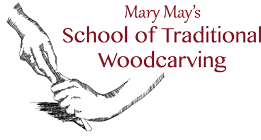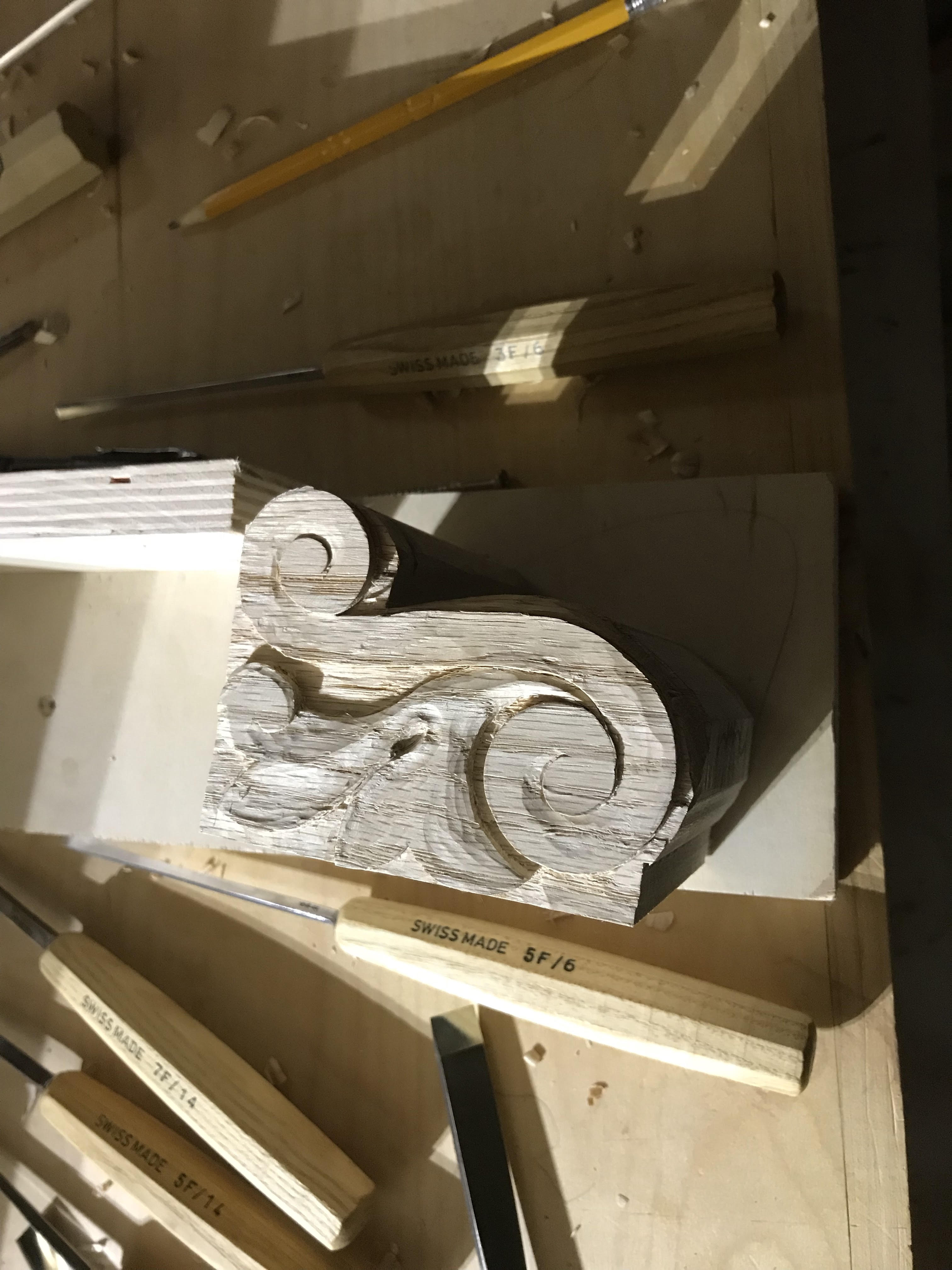Backgrounding in deep, narrow channels
Quote from Scott Olsson on October 17, 2017, 11:07 pmAny tips on getting a smooth finish in narrow, deep bits of background? I'm working on a pair of small corbels in oak, with a small acanthus leaf on the sides (you'll recognize the pattern from Mary's recent yellow pine
nightmareproject). Here are the ideas I (partially) know about so far.(1) Don't go so deep. Oops, too late for this one... did I need that depth to make my details visible? It seemed like I did.
(2) I could get some fancy spoon bent gouges. I suppose there is still a limit on how deep you can go with these? Any recommendations on sizes which might be helpful?
(3) Should I not be doing this in oak?
Watching Mary's Celtic Knot video helped a bit, but if there are other relevant videos I should watch, please share!
pax,
Scott
Any tips on getting a smooth finish in narrow, deep bits of background? I'm working on a pair of small corbels in oak, with a small acanthus leaf on the sides (you'll recognize the pattern from Mary's recent yellow pine nightmare project). Here are the ideas I (partially) know about so far.
(1) Don't go so deep. Oops, too late for this one... did I need that depth to make my details visible? It seemed like I did.
(2) I could get some fancy spoon bent gouges. I suppose there is still a limit on how deep you can go with these? Any recommendations on sizes which might be helpful?
(3) Should I not be doing this in oak?
Watching Mary's Celtic Knot video helped a bit, but if there are other relevant videos I should watch, please share!
pax,
Scott
Quote from Scott Olsson on October 17, 2017, 11:12 pmps- this project is a first for me in many respects: a first attempt at an acanthus leaf, a first in oak, a first sort of "in the round", a first working so much in the end grain (wowzers, the oak didn't feel hard until cutting across end grain...!). I'd sincerely appreciate criticism or suggestions!
ps- this project is a first for me in many respects: a first attempt at an acanthus leaf, a first in oak, a first sort of "in the round", a first working so much in the end grain (wowzers, the oak didn't feel hard until cutting across end grain...!). I'd sincerely appreciate criticism or suggestions!
Quote from MaryMay on October 20, 2017, 8:47 amHi Scott. Wow. you dove in at the deep end, didn't you? Backgrounding plus oak? Now try basswood, and it will feel like carving soft butter 🙂
You've done a fine job with that, and I'm impressed you were able to do what you have in oak. It appears that you were able to get that background down cleanly, but the best trick I can suggest is small very deeply angled spoon bent gouges (probably a #3 curvature and 2 to 6mm). I wouldn't use a flat spoon bent, as it will most likely dig in at the corners.
Hint - the "stippling" method of making a textured surface with a punch really helps make a background smooth (a little trick of the trade to make something that is difficult to flatten more uniform).
Another Hint - If you carve the same design in butternut, you can make it look just like oak and will make your life much easier. As long as this is not structural, you should be fine. Butternut is not a very strong wood, but for decorative purposes it works great.
Hi Scott. Wow. you dove in at the deep end, didn't you? Backgrounding plus oak? Now try basswood, and it will feel like carving soft butter 🙂
You've done a fine job with that, and I'm impressed you were able to do what you have in oak. It appears that you were able to get that background down cleanly, but the best trick I can suggest is small very deeply angled spoon bent gouges (probably a #3 curvature and 2 to 6mm). I wouldn't use a flat spoon bent, as it will most likely dig in at the corners.
Hint - the "stippling" method of making a textured surface with a punch really helps make a background smooth (a little trick of the trade to make something that is difficult to flatten more uniform).
Another Hint - If you carve the same design in butternut, you can make it look just like oak and will make your life much easier. As long as this is not structural, you should be fine. Butternut is not a very strong wood, but for decorative purposes it works great.

